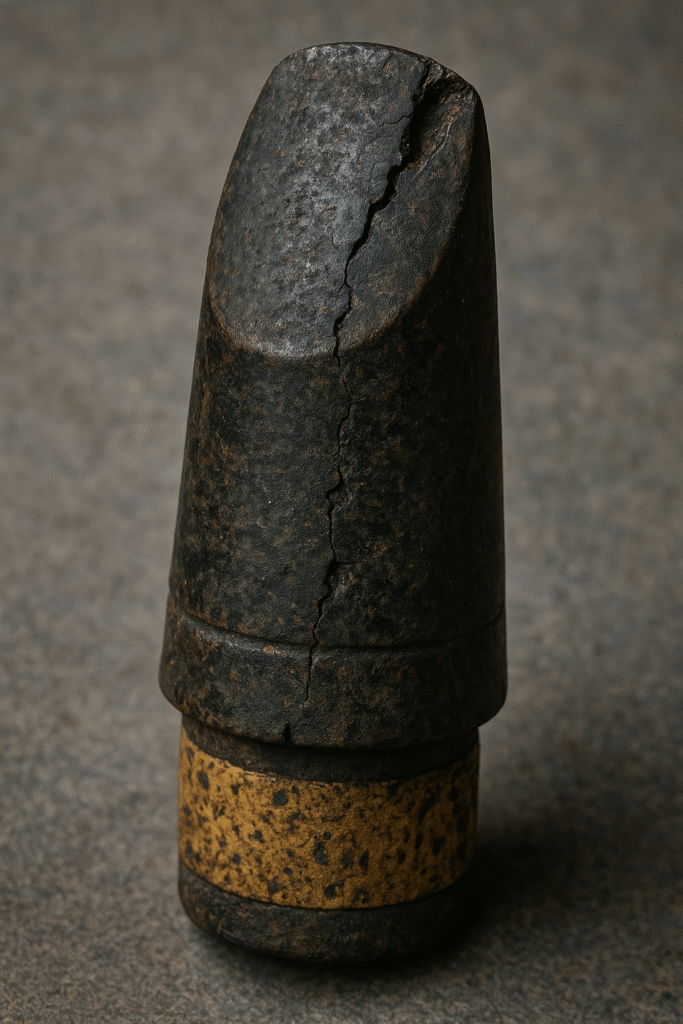As a clarinetist, your mouthpiece is one of the most critical components of your instrument. It’s the point of contact between you and the clarinet, significantly influencing your sound quality, playability, and overall musical expression. However, like any other part of your clarinet, the mouthpiece doesn’t last indefinitely. Recognizing when it’s time to replace your mouthpiece is essential to maintain your playing standards and sound quality. Here are some signs that indicate your mouthpiece may need to be replaced.
- Physical Damage
One of the most obvious signs that your mouthpiece needs replacing is physical damage. Cracks, chips, or dents can occur from mishandling or accidental drops. These imperfections can significantly affect the mouthpiece’s response and tone. A damaged mouthpiece can result in unexpected sounds and unwanted resistance while playing. If you notice any visible damage, it’s best to consult a technician or consider purchasing a new mouthpiece.
- Poor Sound Quality
Your sound quality should be consistent with your playing expectations. If you find that your mouthpiece produces a harsh, weak, or unstable sound, it could indicate that it has worn out. An aging mouthpiece can fail to project sound adequately or may struggle to produce the timbre you desire. Pay attention to any changes in tone; if you can’t achieve the sound you aim for, it may be time for a replacement.
- Difficulty Producing or Controlling Notes
Another sign that your mouthpiece may be reaching the end of its life is difficulty in intonation or control. If you’re struggling to play in tune or find it challenging to manage your dynamics, your mouthpiece’s wear could be to blame. A well-functioning mouthpiece should allow you to navigate octaves and dynamics with ease. If you notice a marked change in your ability to control your sound, it’s advisable to investigate further.
- Change in Playing Feel
What feels good when you play should never be underestimated. If your mouthpiece feels less responsive or unyielding, and you find the tone feels “dead,” these are clear indicators that it might be time for a replacement. The ease of achieving a good sound is crucial for any musician, and if the mouthpiece is no longer aiding your performance, the issue may be its wear and tear.
- Age and General Wear
Even if your mouthpiece looks visually immaculate, it can still lose its ideal shape and response over time due to regular use. If you’ve been using the same mouthpiece for five to ten years—even without visible damage—it’s wise to consider a replacement. Materials like hard rubber and plastic can degrade, affecting how it resonates and performs.
When to Consider Replacing Your Mouthpiece
If you notice any of the above signs or you’ve been using your mouthpiece for an extended period, it’s time to think about your next mouthpiece. Upgrading your playing style or sound can also motivate the decision to replace a mouthpiece, particularly if you’re transitioning from a beginner-level plastic mouthpiece to a higher-quality material that enhances your sound.
Ultimately, the mouthpiece is an essential element of your clarinet setup. By keeping an eye out for physical damage, changes in sound quality, intonation, or feel, and being aware of its age, you can ensure that your mouthpiece continues to support your musical growth and allows you to achieve the best possible performance on the clarinet. Remember, when in doubt, consulting a professional can guide you toward the best options for your unique playing needs.


2 Responses